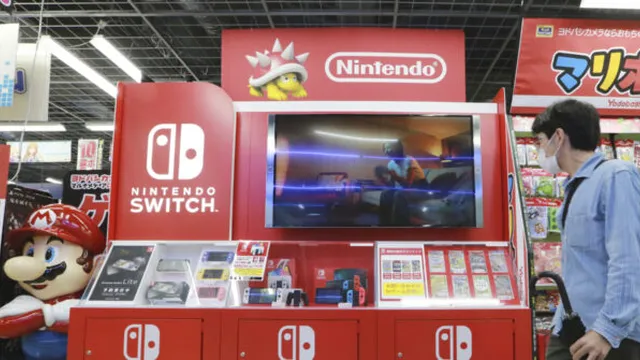
Nintendo switch 2 launches at steep price amid customer backlash
2025-04-04 01:47- Nintendo's Switch 2 will cost $449.99 when it is released in June 2025.
- Several new games for the console will also see significant price increases.
- The price hike has led to customer dissatisfaction and concerns over affordability.
Express your sentiment!
Insights
On April 2, 2025, Nintendo revealed that the Nintendo Switch 2 will be priced at $449.99 and is set for release on June 5, 2025. This price represents a significant increase from the original Switch's launch price of $300 in 2017 and has raised concerns among consumers, especially with many anticipating a more modest price hike. Alongside this announcement, Nintendo also revealed that several new games will be priced at record levels, with some titles reaching up to $80—breaking the previously common $70 ceiling for video game prices. The announcement was met with mixed reactions, as many customers expressed disappointment regarding the unexpected price increase. Some fans took to social media to voice their concerns, noting that inflation and other economic factors may have led to this decision. The pricing strategy is complemented by new features in the Switch 2, which offers an improved gaming experience including a 256GB storage option, 4K capability when docked, and enhancements in gameplay mechanics such as in-game chats and a redesigned user interface. In the UK, the pricing for the Nintendo Switch 2 is set at £395.99, which is nearly £90 more than the price of the Nintendo Switch OLED. Pre-orders have opened, with special priority given to long-term Nintendo Switch Online members. This move aligns with Nintendo's strategy to reward loyal customers. However, the level of price increase has still raised eyebrows in the gaming community, making it crucial for Nintendo to carefully monitor consumer sentiment moving forward. Nintendo’s production strategy may also play a role in these price changes, as some manufacturing has reportedly shifted to Vietnam to avoid potential tariffs associated with trade policies. As the video game landscape continues to evolve with increasing competition, the expectation is that Nintendo will need to justify this price hike to maintain its customer base while also competing against other major players in the gaming world.
Contexts
The Nintendo Switch 2 has sparked considerable interest among gaming enthusiasts and industry analysts alike, particularly with speculation around a potential price increase. Several factors contribute to this anticipated hike in price, centered primarily on advancements in technology, increased production costs, and market positioning strategies. As the gaming sector evolves, consumers expect more sophisticated hardware and features, leading companies like Nintendo to invest heavily in research and development, which subsequently influences retail pricing. One critical reason for the expected price increase lies in the technology enhancements incorporated into the Nintendo Switch 2. Advancements such as improved graphics, faster processing speeds, and better battery life are not only desirable but essential for remaining competitive in the rapidly advancing gaming landscape. These upgrades necessitate the use of more expensive components and manufacturing processes. Furthermore, amidst global supply chain challenges and component shortages that have plagued various industries post-2020, the costs of materials have surged. This situation forces manufacturers, including Nintendo, to either absorb losses or pass additional expenses onto consumers, thus contributing to the overall increase in the retail price. In addition to technological improvements and production costs, competitive market dynamics also play a crucial role. Nintendo has to position the Switch 2 effectively against rivals such as Sony’s PlayStation and Microsoft’s Xbox, products that have seen substantial investment in high-performance specifications. This ongoing rivalry compels Nintendo not only to innovate but also to price its products in a way that reflects their new capabilities while ensuring they still appeal to a broad audience. Implementing a price increase could also be a strategic move to reinforce the perception of quality and value associated with the Nintendo brand, allowing it to maintain an edge among discerning gamers. Lastly, escalating operational costs, including labor and logistics, further compound the price considerations for the Nintendo Switch 2. As economies recover from the pandemic, these costs are trending upwards. To ensure sustainability and profitability, Nintendo must factor these elements into the retail pricing of its new console. Overall, while the reasons for a price increase on the Nintendo Switch 2 are multifaceted – stemming from enhanced technology, production challenges, competitive positioning, and extenuating operational costs – they illustrate Nintendo's commitment to delivering a premium gaming experience in a challenging economic climate.